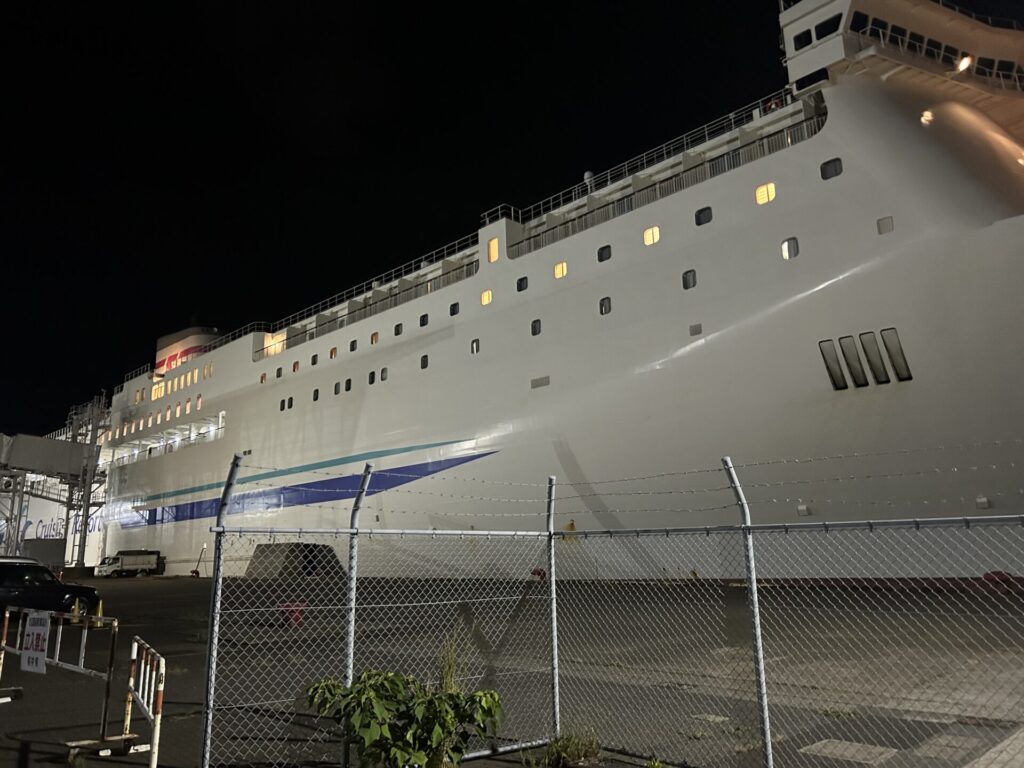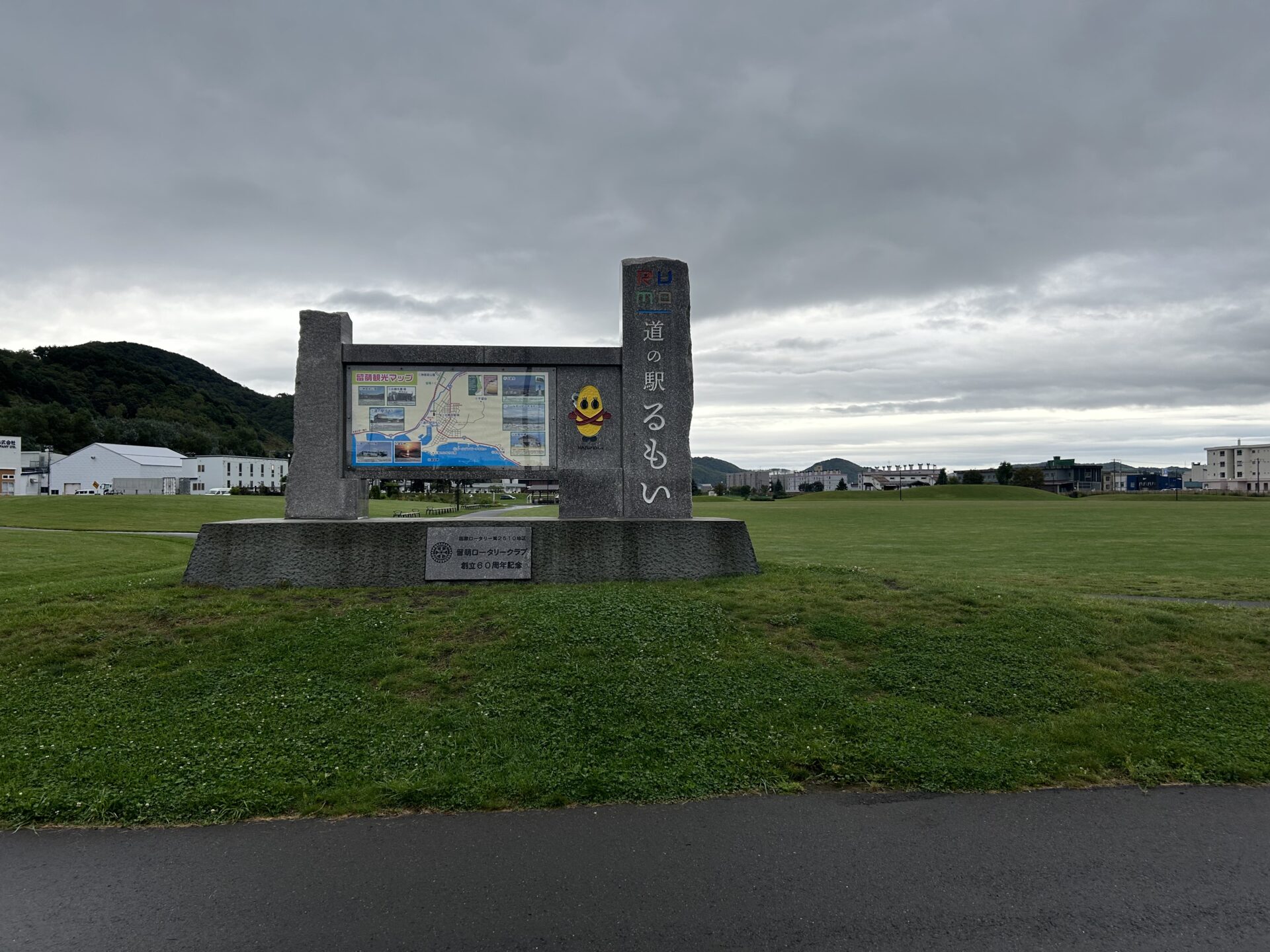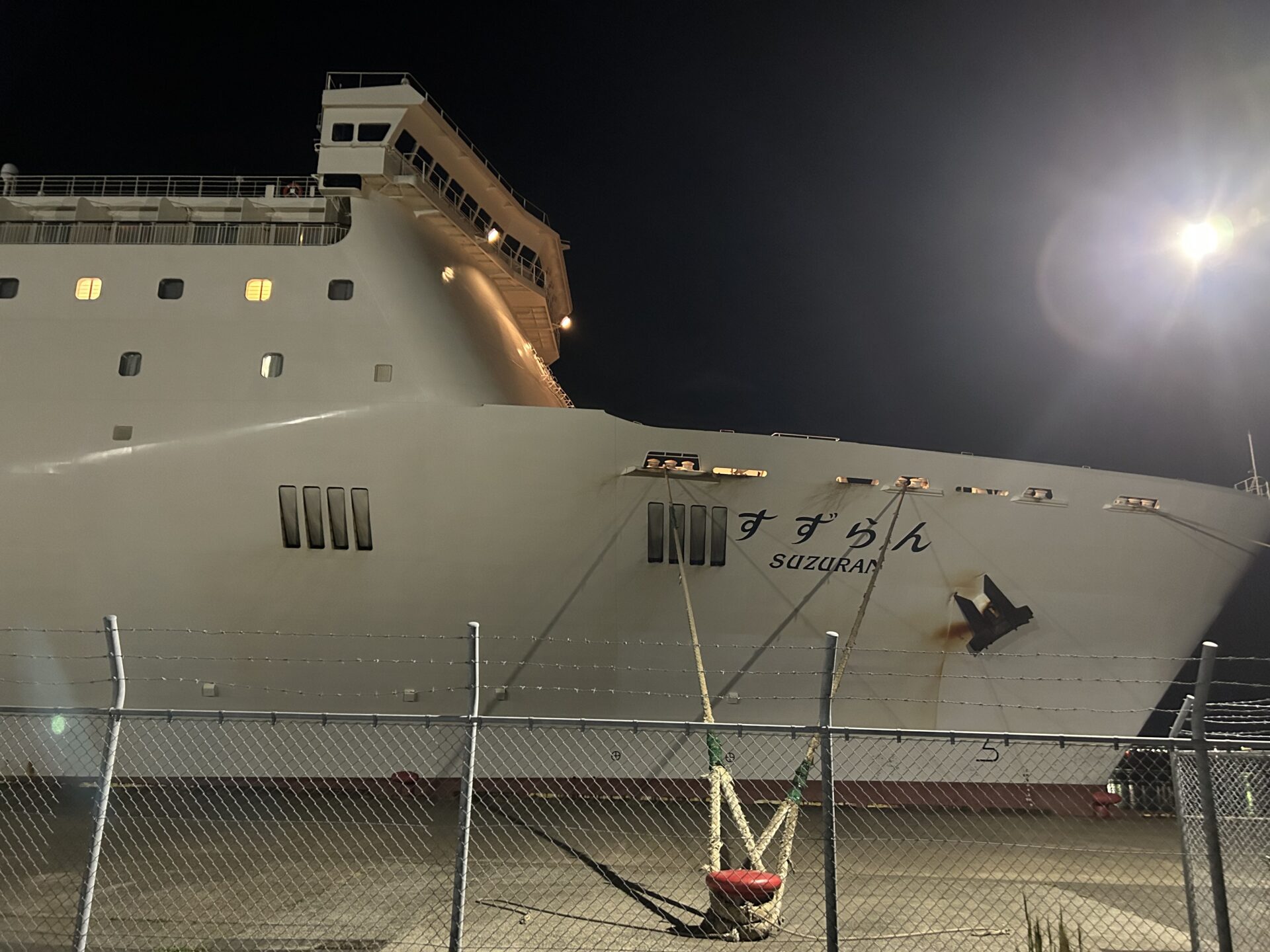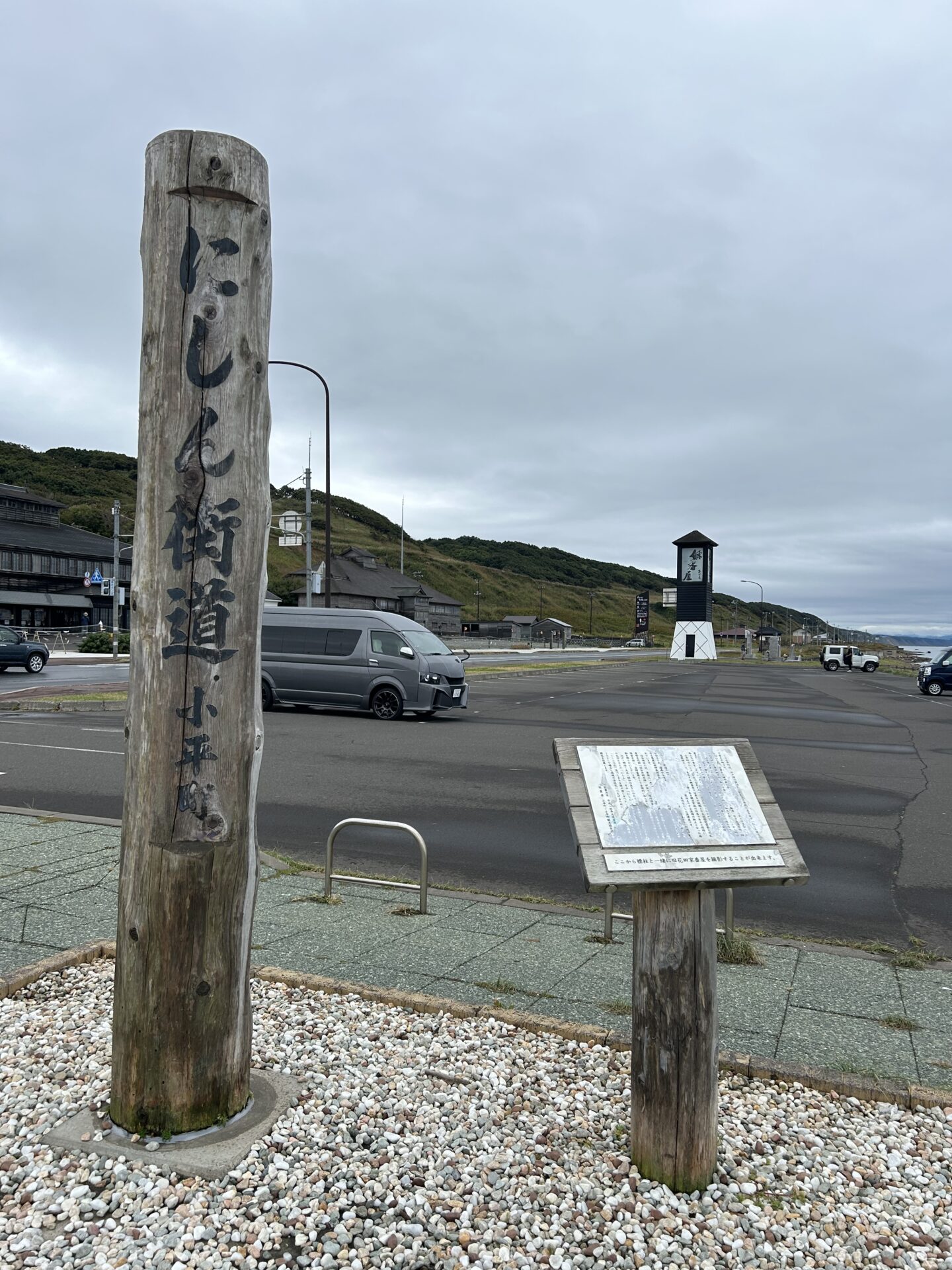
Hello.
It’s the second day of our trip to Hokkaido.
The ferry that departed from Tsuruga Port in Fukui Prefecture at 11:55 PM on Friday arrived at Tomakomai East Port at 8:30 PM the following Saturday. It was a long sea journey.
After disembarking from the ferry, we immediately got on the highway and passed through Chitose and Sapporo, making our way to the roadside station (Michino-eki in Japanese) “Rumoi,” about 210 kilometers away. Initially, we planned to go a bit further to the roadside station in Obira Town, but I was overcome by drowsiness, so we changed our plans and decided to spend the night in our camper van at Rumoi. Traveling in a camper van is great because there’s no need to book hotels, allowing for a free and easy-going journey without worrying about where to stay.
The expressways have rest areas known as Service Areas (SA) and Parking Areas (PA) that are open 24 hours, but there are very few rest areas on regular roads. This led to the establishment of the first roadside station in Tottori Prefecture in 1993. Since then, they have continued to proliferate, and as of October 2024, there are 1,221 nationwide, with Hokkaido having the most at 128. You can stay overnight for free in your vehicle, use the restrooms 24 hours a day, and usually find other vehicles parked for the night, making it a safe option for car camping.
Tomorrow, we’ll be driving along the stunning coastal route, the Orolon Line, heading towards the northernmost point of Japan, Cape Soya.
See you!
こんにちは!
北海道旅、2日目です
金曜の夜11:55に福井の敦賀港を出たフェリーは、翌日の夜8:30に苫小牧東港に到着。なかなかの長旅でした〜
下船後はすぐ高速に乗って、千歳→札幌を通過して、一気に約210km先の道の駅「るもい」まで移動。最初はもう少し先の「道の駅おびら鰊番屋」まで行く予定だったけど、眠気に勝てず予定変更。道の駅るもいで車中泊することにしました。
やっぱりキャンピングカー旅は自由でいいですね。宿の予約もいらないし、眠くなったらどこでも寝られるのが最高!
ちなみに、高速には24時間使えるSA・PAがあるけど、一般道には少ないんです。そこで1993年に鳥取県に初めて道の駅ができて以来、全国に広がり、2024年10月時点で全国に1,221か所もあるんですよ!その中でも北海道は最多の128か所
トイレは24時間使えるし、車中泊OK。他の車も結構停まってるので安心です。
明日は絶景ルート「オロロンライン」を走って、日本最北端の宗谷岬を目指します!
またね〜



コメント